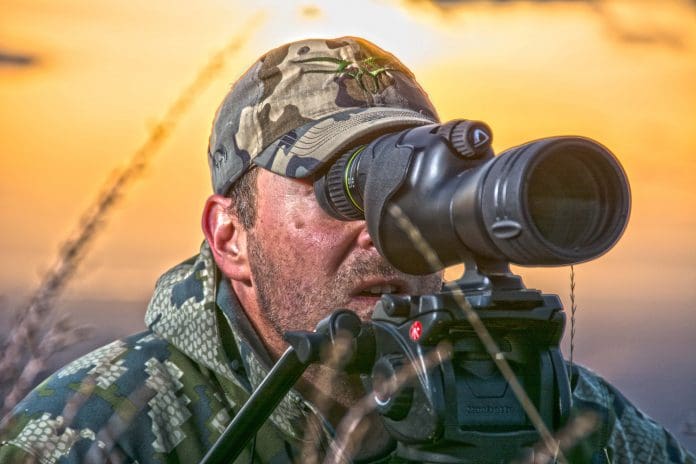Vanguard Endeavor HD 65S Spotting Scope – Shocking Performance & Value
by Darin Cooper
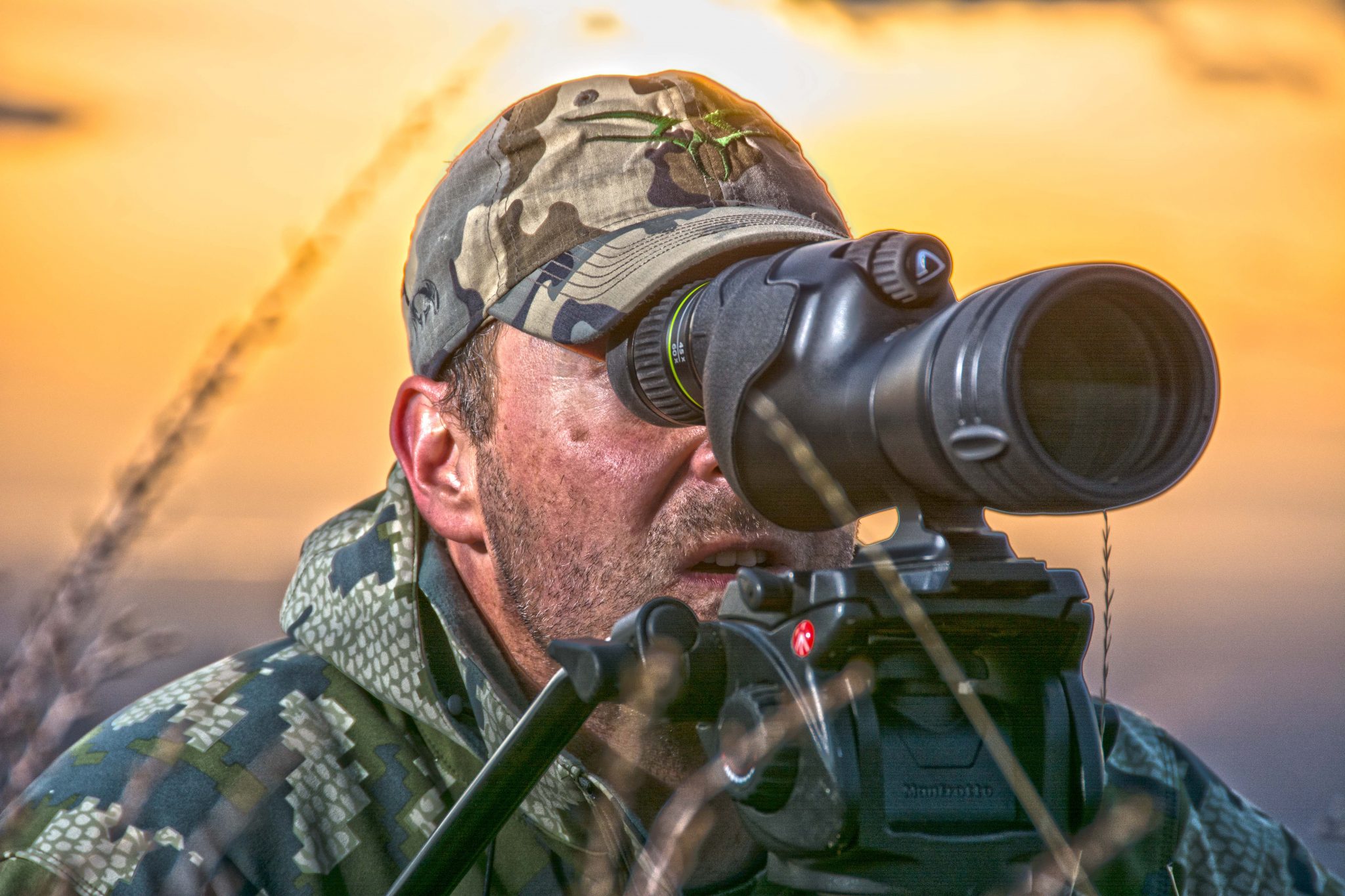
Admittedly, when I unboxed the Vanguard Endeavor HD 65S spotting scope, I didn’t know too much about it. Furthermore, being the European optics snob that I am, my expectations for a spotting scope manufactured by a company known best for tripods weren’t too high. After first setting the scope’s focus knob and looking through the eyepiece, I knew I needed to throw all my assumptions out the window about how this scope was going to perform! You see, apparently, Vanguard has been quietly, but steadily climbing the sporting optics ladder and they’ve done so by opening their very own state of the art optical design and testing lab.
Since their research facility’s inception in 2003, some interesting products have been hitting the market in their tripod and optics product lines. The Endeavor Series of Spotting Scopes and Binoculars was born from that effort. The Endeavor binoculars hit the market in 2010 and the Endeavor HD spotting scopes hit the market in early 2013. The Endeavor HD 65S I tested is a 15-45X straight bodied spotting scope with a 65mm objective lens. The Endeavor utilizes extra low dispersion (ED) glass to minimize chromatic aberration and distortion. The scope is also offered in a 65 mm angle bodied version and in 82 mm angled and straight versions with 20-60X magnification.
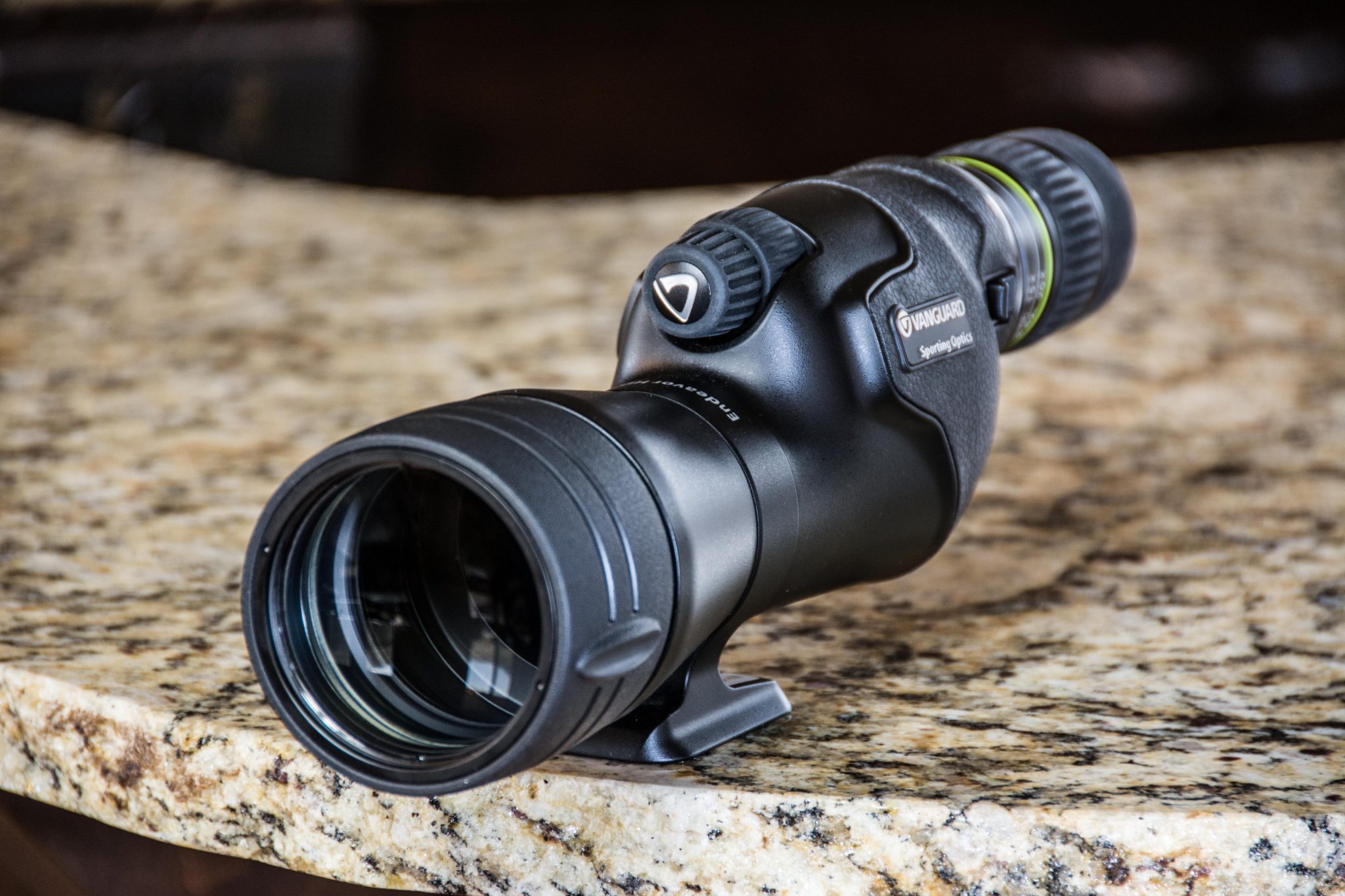
Form & Function:
The first clue that this wasn’t a cheap, sub-par spotter was its weight. Yeah, like all high quality, expensive optics, it’s heavy. At 3 lb. 3 oz. it’s actually about 3 ounces heavier than a Swarovski ATS 65 HD with 20-60X eyepiece. Based on that, one could reason that the construction is sturdy and at least similar to what the high end European manufacturers are doing. The straight body 65 is only an inch shorter than my Swarovski ATS 80HD.
The Endeavor comes with a Cordura cover that protects the spotting scope. The cover can be left on during use which is a nice feature when the scope is riding around in a vehicle, but perhaps not so much for a back-country hunter. The padded cover adds another 5 ounces and would readily absorb moisture if exposed to wet weather. I left the cover on the scope until it was time to take it backpacking.
The scope features the same kind of coarse and fine focus adjustment knobs that are so familiar to Zeiss and Leica spotting scope users. The focus knobs function smoothly and accurately and are easy enough to use even with gloves on. The knobs don’t have any perceptible backlash or slop. The power adjustment is made on the eyepiece in typical fashion. The eyepiece has a twist out eye-cup to adjust eye relief and can be screwed all the way in for eyeglass wearers. The Endeavor was actually easier to focus than the Swarovski because the smooth rolling fine focus knob didn’t jiggle the scope nearly as much as rolling the relatively stiff focus ring on the ATS80. I also noticed that when zooming from low to high power, the Endeavor required less focus adjustment than the Swarovski.
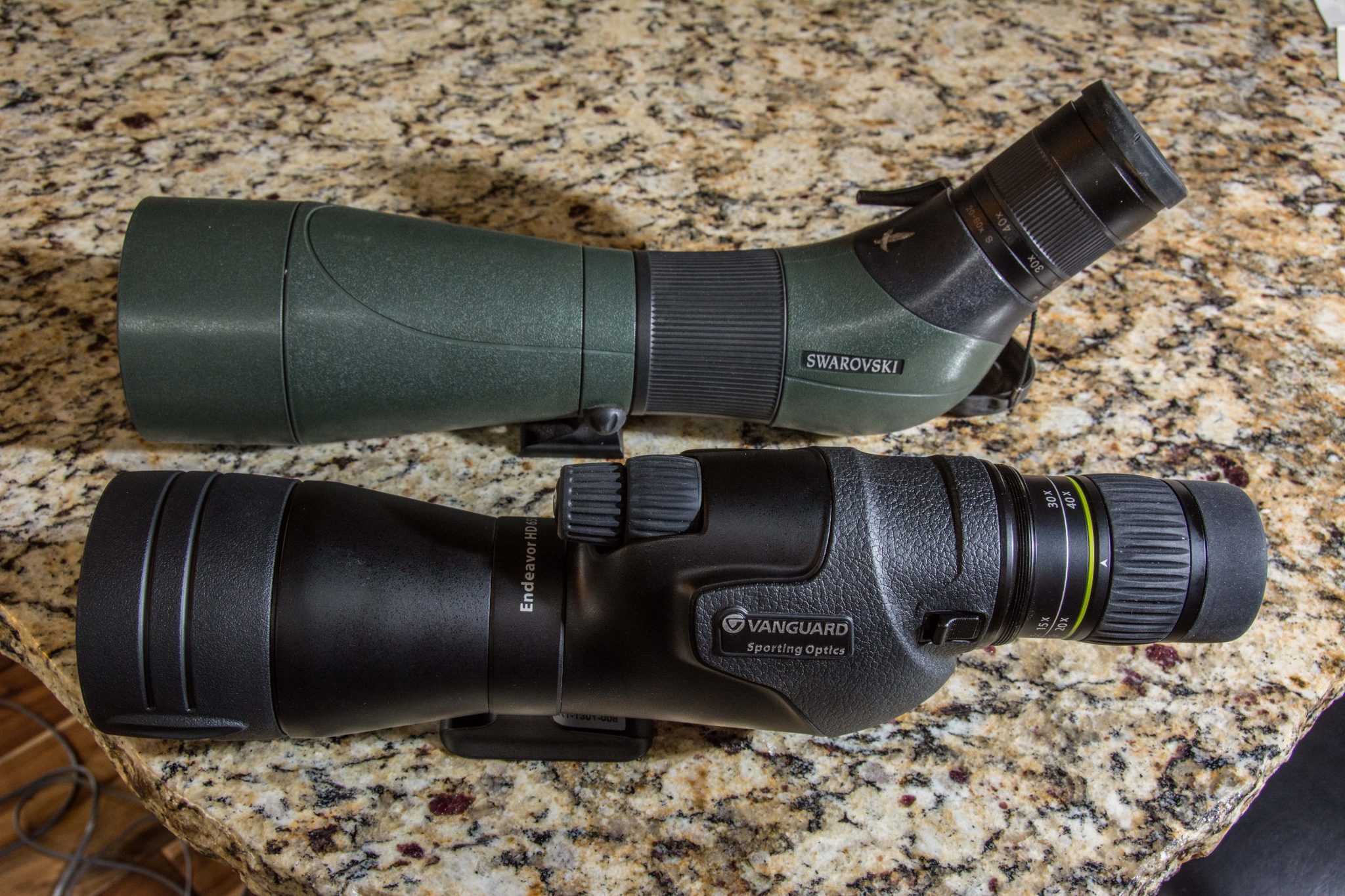
The Endeavor features a telescoping sun-shade up front with scope aiming grooves molded in and a much appreciated threaded objective housing (67mm) so a UV lens protector can be screwed on to protect the precious objective lens. I don’t know why every company does not do this for all sport optics.
On a tripod the Endeavor HD 65S balances a little rearward, but I suspect the angled body would balance somewhat better. The tripod mounting shoe will dovetail directly into Vanguard tripods, but requires an adapter plate to fit Bogen style quick release systems.
I had one minor issue with the Endeavor. The tripod mounting foot rides on a ring that would normally allow the angled version of the scope to rotate or be locked down. The ring was not completely locked into place on the straight bodied scope, and without a thumb screw to tighten, I initially thought I was stuck with an unstable mount. After looking thoroughly I found a small set screw deep inside the tapped ¼-20 hole where a quick release plate would screw on. I tightened the set-screw with a small, standard screwdriver and the mount was once again rock-solid. I thought this was worth mentioning because some might consider sending the scope in for warranty if they couldn’t find the well-hidden set screw to tighten up the mount.
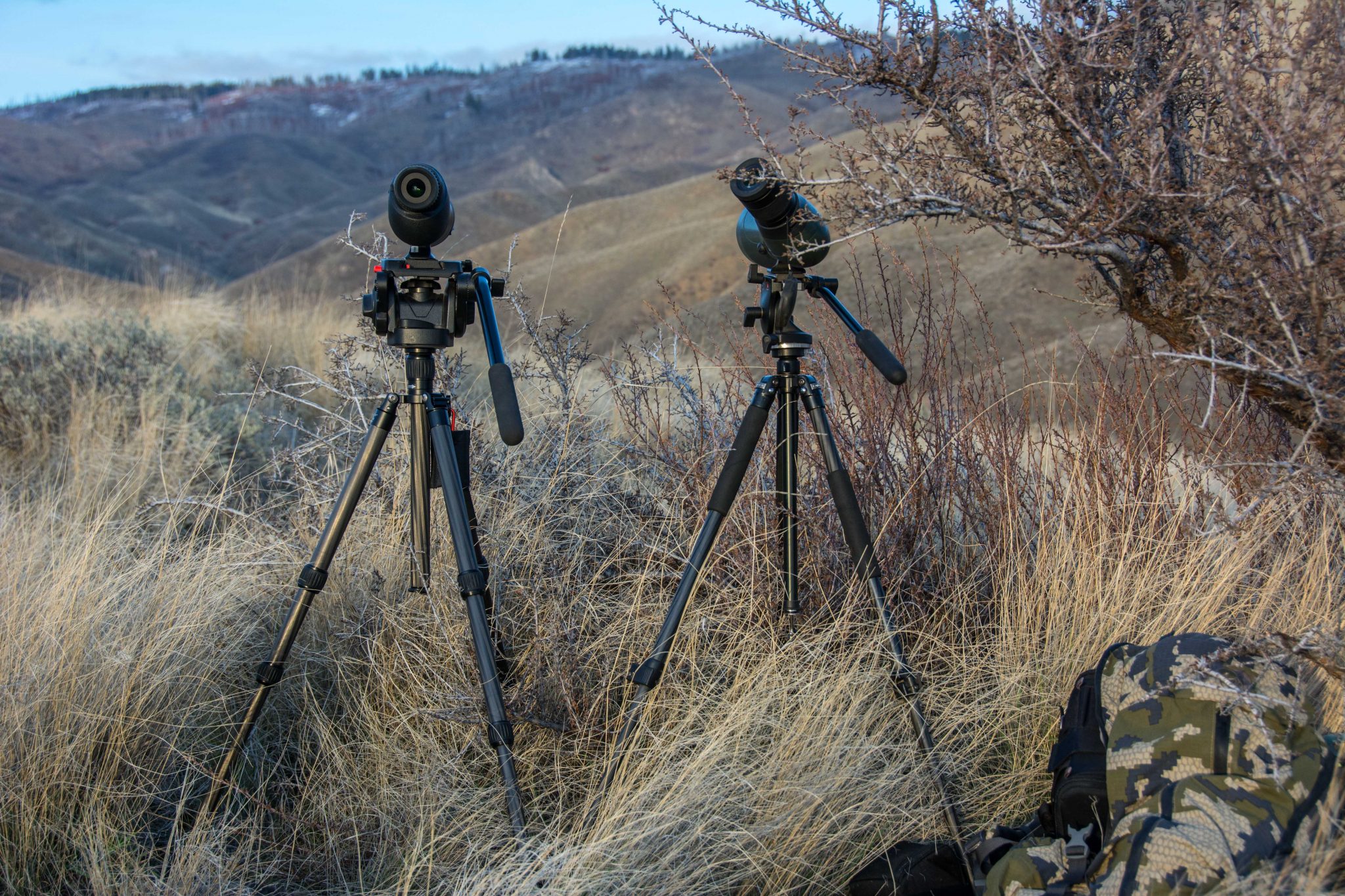
Optical Performance:
The reference standard that I use for evaluating spotting scopes is the venerable Swarovski ATS 80 HD. It is well known for its optical performance and one of them just happens to make its home in my optics collection. Granted – it’s unfair to compare these two scopes directly as they are clearly in different leagues from a price standpoint and the much larger objective is a decided advantage for the Austrian. However, we can draw some conclusions based on how well the little Vanguard performs against one of the best ever made.
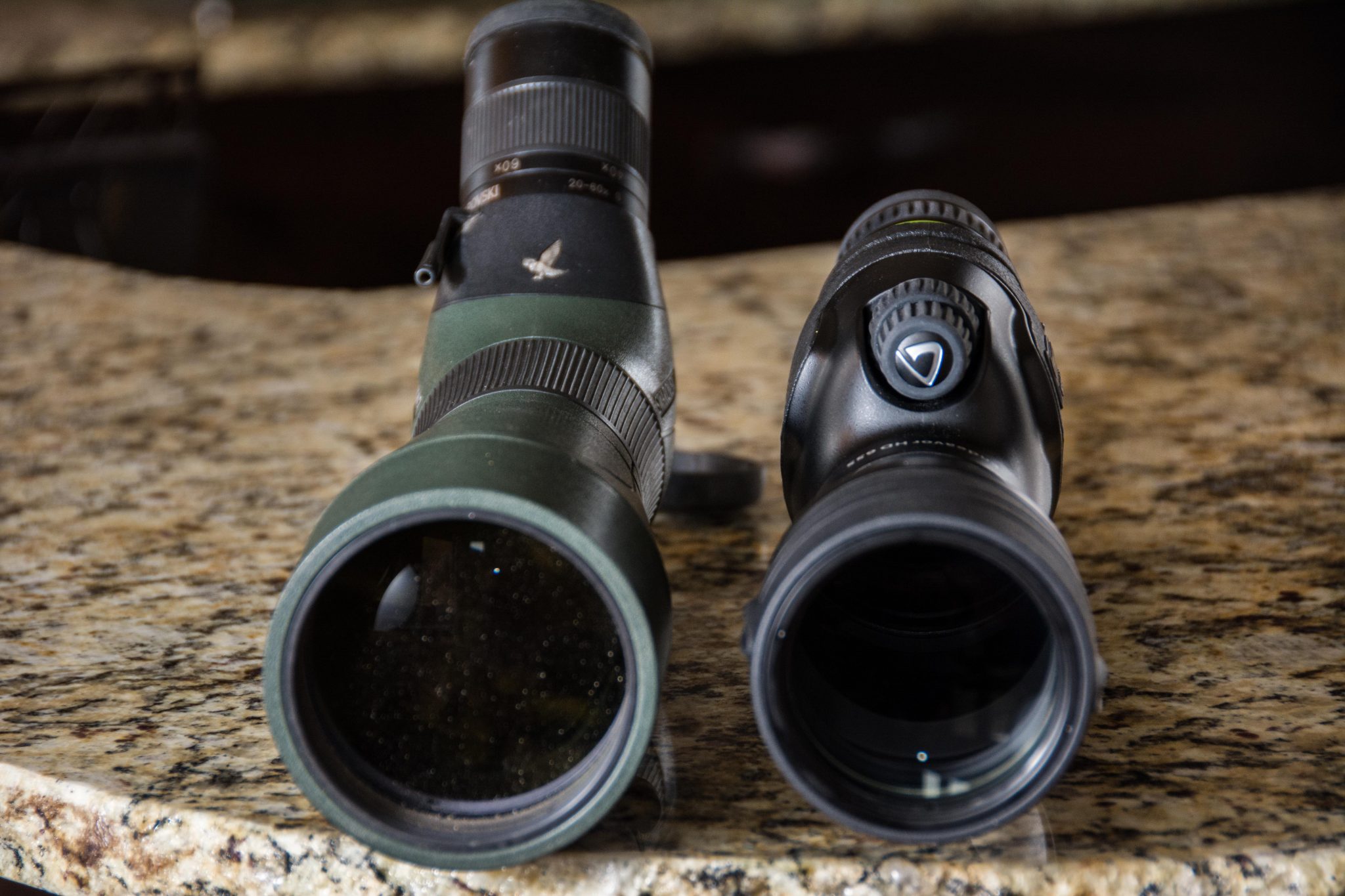
I actually spent a lot more time testing and comparing these scopes than I had initially planned on. The performance of the Vanguard was so good I had to look really hard to spot its weaknesses – Frankly, it kind of pissed me off that it was so good at a price so low. I’m going to put my asbestos lined ceramic suit on now because I fully expect to get flamed after I tell you the 65 mm Vanguard Endeavor actually outperformed my 80 mm Swarovski ATS-HD in some tests. For the record, Vanguard supplied Rokslide with the scope for this review, but they are not currently a sponsor of myself or Rokslide.com. The scope will be given away to a lucky Rokslide member after I am finished with my evaluation.
Chromatic Aberration (CA) – CA was VERY well controlled in the Endeavor, especially at the center of the field of view. If you’re not looking through the eyepiece perfectly, some minor color fringing is noticeable in high contrast viewing situations. Compared to the Swarovski it was not only very good… I dare say it was a touch better at controlling color fringing in the situations that I tested it in. Both scopes exhibit color fringing, but the fringes with the Swarovski seemed a little wider and more evident.
Contrast – Hands down, the Vanguard has much higher contrast at all powers than the Swarovski. This was shocking because our eyes perceive contrast as image sharpness so… in most situations, the view through the Vanguard was more pleasing. Colors seemed more saturated and the image had more “pop”. Fine details of distant, sky-lined sagebrush seemed to be better defined through the Endeavor.
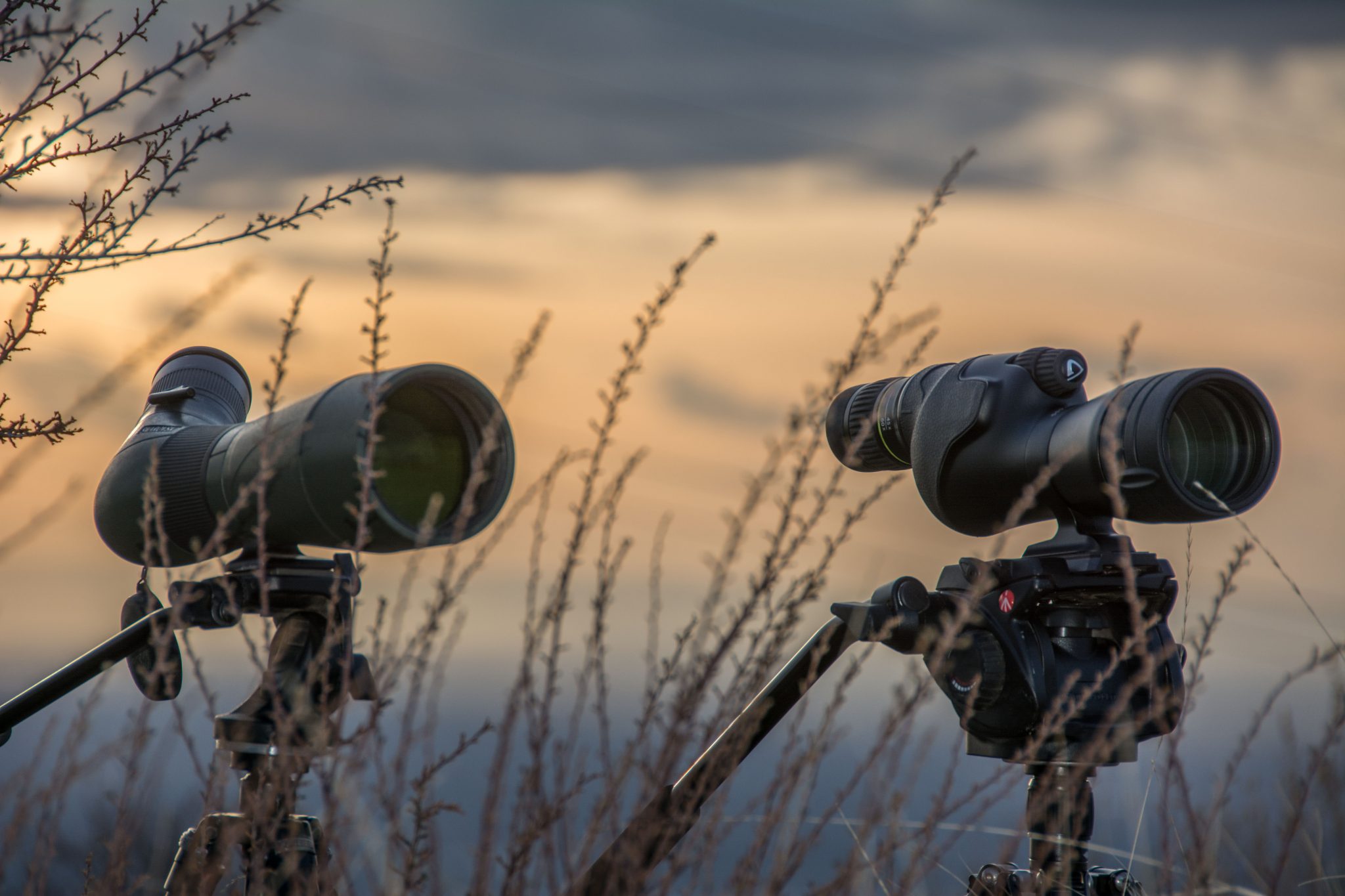
Resolution – The resolving power of a scope is affected by the objective diameter as well as the overall quality and design of the lens elements. Due to its objective lens size handicap the Endeavor should not match the large eyed Swarovski ATS 80HD, but it did surprisingly well. I posted a resolution target at 50 meters and viewed it at 20X, 30X, and 45X through both scopes. Here’s where it gets interesting… The Vanguard’s resolution was slightly better than the Swarovski on the target at 20X. Both scopes resolved approximately 100-110 lines/mm at 20X but there was no doubt the Vanguard was reaching a little farther on the scale. At 30X, the two scopes resolved approximately 150 lines/mm and there was no clear winner. At 45X both scopes resolved better than 200 lines/mm (max in my chart) but the Swarovski had a definitive advantage at the higher magnification.
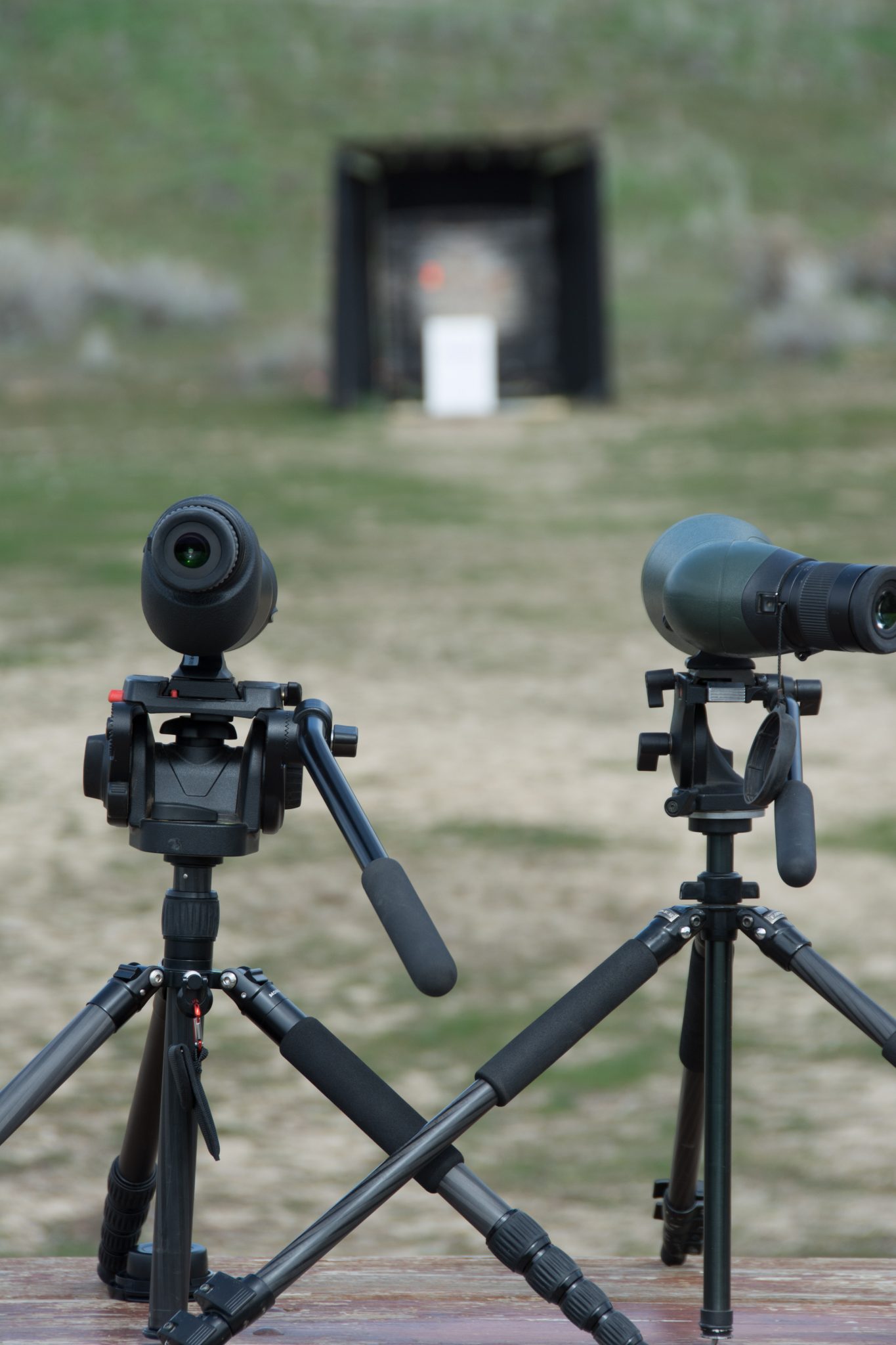
The rest of the story – Fortunately for everyone that dropped as much coin as I did on my Swarovski – the resolution target does not tell the whole truth. I spent several sessions glassing deer and distant objects under hunting conditions with both scopes side by side. I came to realize that the Endeavor’s incredible contrast had skewed the resolution test. With such great contrast it was easier to see the white/black gradations on the test target. However, when viewing distant objects like deer – the Swarovski’s resolution was clearly much better. Fine details in a mule deer’s face would show up in the Swarovski that the Vanguard just couldn’t resolve. This was again most pronounced at higher powers viewing very distant objects – situations much like you would use your scope to field judge antlers.
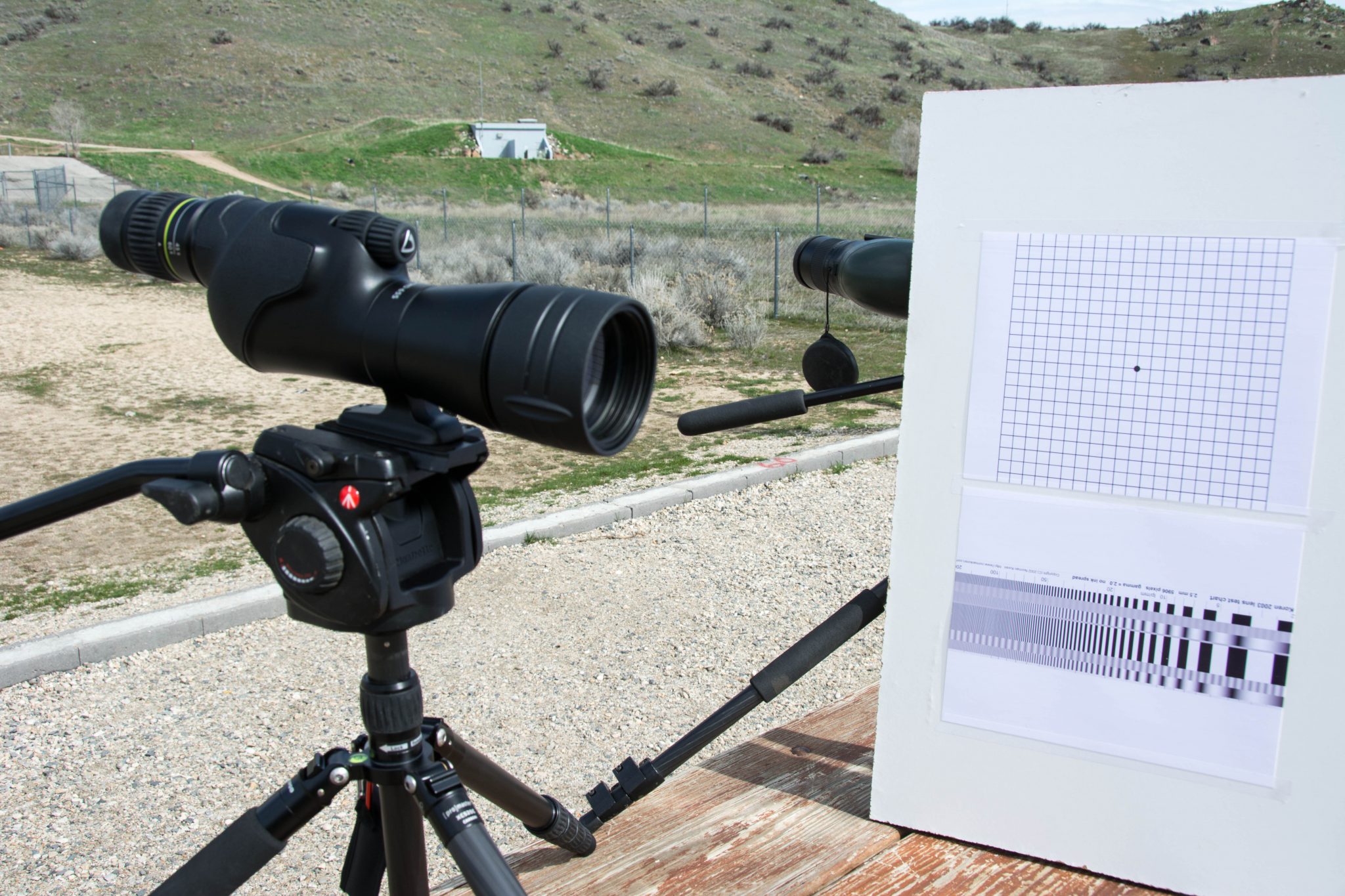
Distortion – The Endeavor’s field of view is virtually distortion free at 15X. At higher magnifications, the image becomes pincushion distorted which helps make panning movements more appealing for most users. I didn’t find the pincushion distracting or really noticeable while glassing, but it was easy to see on a grid-based distortion target.
Edge to Edge Performance is somewhat odd with the Endeavor HD 65. When looking through the center, a ring around the very edge appears slightly soft and distorted, but when you look to the edge of the field of view the image actually appears relatively sharp. I suspect my eye is adjusting focus slightly and correcting for the minor imperfections in the edge clarity. There is some minor vignetting (darkening toward the edge of the view) that becomes more pronounced in low light situations.
Eye Relief – The eye relief of the Endeavor is listed at 19 – 20 mm. As an eyeglass wearer I found myself bumping my glasses into the eyepiece quite a bit at higher magnifications, but that’s fairly typical for most scopes. The Swarovski definitely had longer eye relief and was more comfortable to use for me with my glasses on.
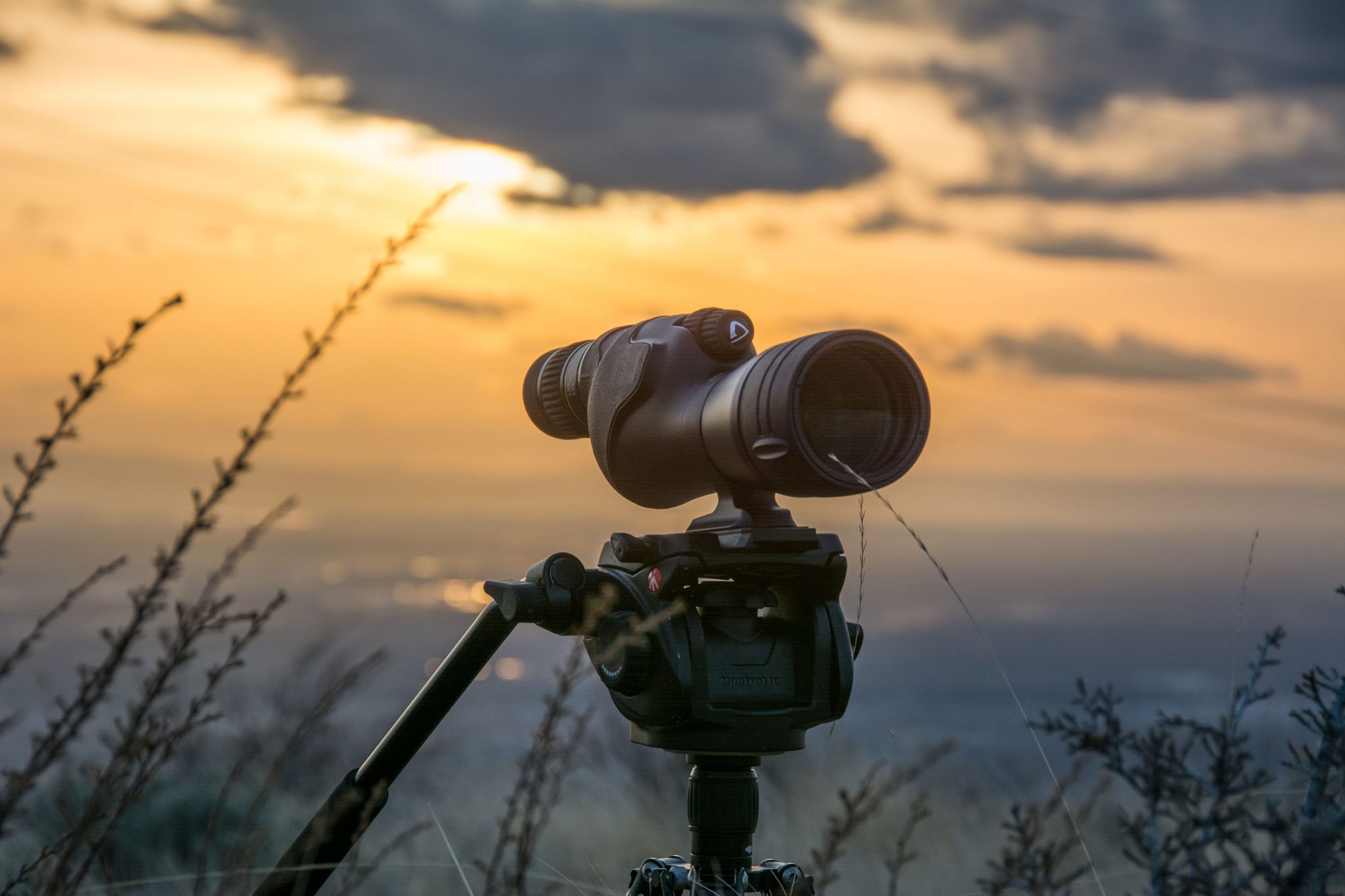
Final Impression – The Vangurd Endeavor HD 65 truly impressed me with its wonderful contrast, superb CA control, and a price that’s hard to match in a piece of glass this good. The Endeavor is definitely worth consideration if you’re in the market for a damn good, value minded spotting scope. I would really like to put the Vanguard up against some similarly sized competition like a Vortex Viper 65 and a Swarovski ATS 65 HD to see how it fares against its peers. I would also like to get my hands on the 82mm Endeavor HD which lists at $689 and weighs 12 oz. more than the 65. I have a feeling the Endeavor HD’s can hold their own against just about anything.
Endeavor HD 65S Specifications & Features:
- Objective lens diameter: 65mm
- Magnification: 15-45x
- Magnesium, Rubber-Armored Housing
- Angle of view: 2.7 – 1.3 degrees
- Field of view at 1000 meters: 48m – 23m
- Eye relief: 19 – 20mm
- Focus system: Center focus
- Near focus: 4.5m (at 15x)
- Lens coating: Fully multi-coated
- Length: 345mm
- Width: 180mm
- Nitrogen filled fog-proof & waterproof
- Weight: 3 lb. 3 oz. & 3 lbs. 8 oz. w/case
MSRP: $589.99, Lowest street price – $449.95 (B&H Photo/video)














